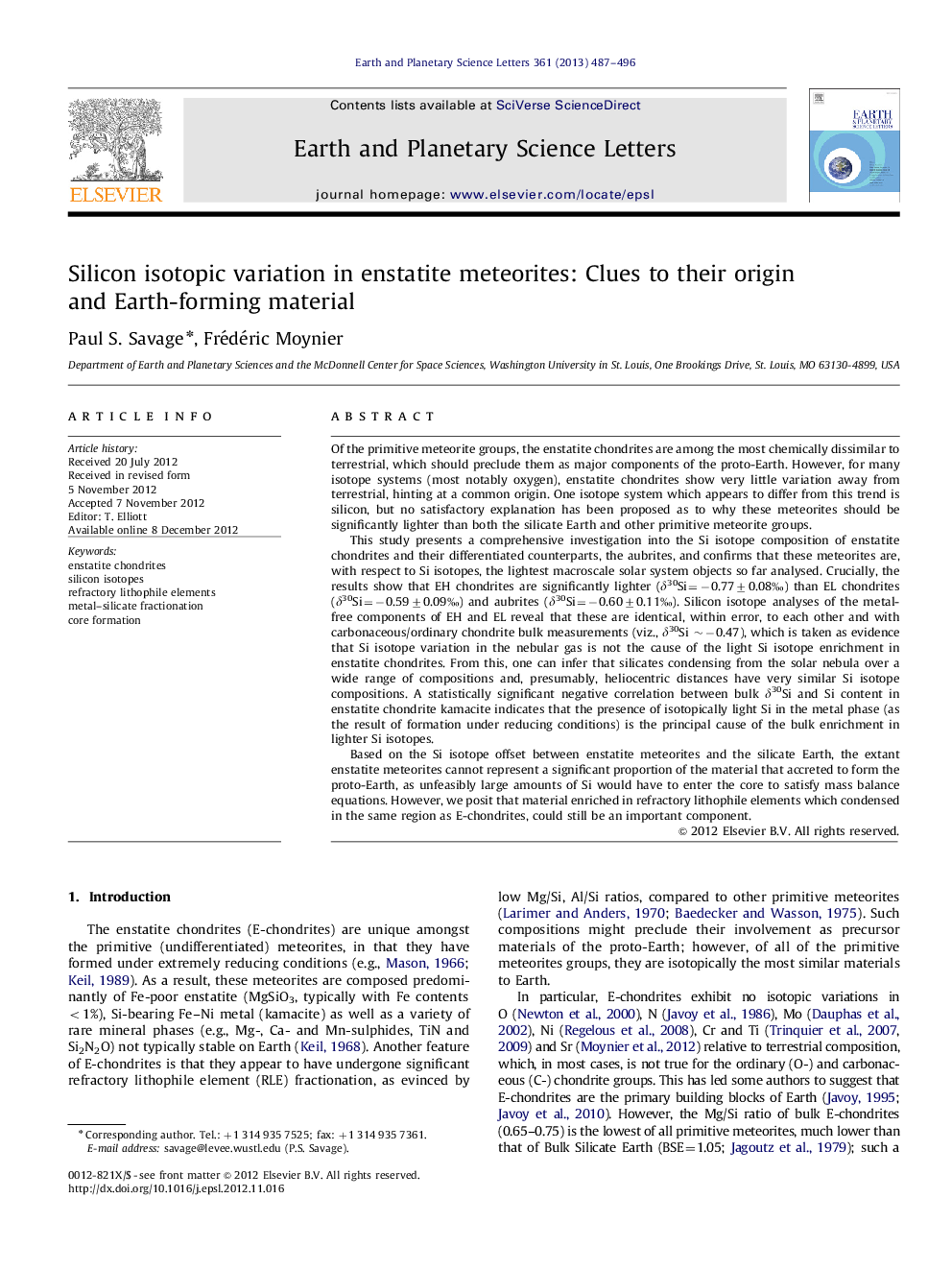| Article ID | Journal | Published Year | Pages | File Type |
|---|---|---|---|---|
| 4677200 | Earth and Planetary Science Letters | 2013 | 10 Pages |
Of the primitive meteorite groups, the enstatite chondrites are among the most chemically dissimilar to terrestrial, which should preclude them as major components of the proto-Earth. However, for many isotope systems (most notably oxygen), enstatite chondrites show very little variation away from terrestrial, hinting at a common origin. One isotope system which appears to differ from this trend is silicon, but no satisfactory explanation has been proposed as to why these meteorites should be significantly lighter than both the silicate Earth and other primitive meteorite groups.This study presents a comprehensive investigation into the Si isotope composition of enstatite chondrites and their differentiated counterparts, the aubrites, and confirms that these meteorites are, with respect to Si isotopes, the lightest macroscale solar system objects so far analysed. Crucially, the results show that EH chondrites are significantly lighter (δ30Si=−0.77±0.08‰) than EL chondrites (δ30Si=−0.59±0.09‰) and aubrites (δ30Si=−0.60±0.11‰). Silicon isotope analyses of the metal-free components of EH and EL reveal that these are identical, within error, to each other and with carbonaceous/ordinary chondrite bulk measurements (viz., δ30Si ∼−0.47), which is taken as evidence that Si isotope variation in the nebular gas is not the cause of the light Si isotope enrichment in enstatite chondrites. From this, one can infer that silicates condensing from the solar nebula over a wide range of compositions and, presumably, heliocentric distances have very similar Si isotope compositions. A statistically significant negative correlation between bulk δ30Si and Si content in enstatite chondrite kamacite indicates that the presence of isotopically light Si in the metal phase (as the result of formation under reducing conditions) is the principal cause of the bulk enrichment in lighter Si isotopes.Based on the Si isotope offset between enstatite meteorites and the silicate Earth, the extant enstatite meteorites cannot represent a significant proportion of the material that accreted to form the proto-Earth, as unfeasibly large amounts of Si would have to enter the core to satisfy mass balance equations. However, we posit that material enriched in refractory lithophile elements which condensed in the same region as E-chondrites, could still be an important component.
► Enstatite (E-)meteorite δ30Si lighter than other meteorite groups. ► EH chondrites are significantly lighter (0.2‰) than EL and aubrites. ► Metal-free EH and EL isotopically identical to ordinary/carbonaceous chondrites. ► Light isotope enrichment in E-chondrites the result of Si in metal phase. ► Material formed in same region as E-chondrites important Earth-forming component?
